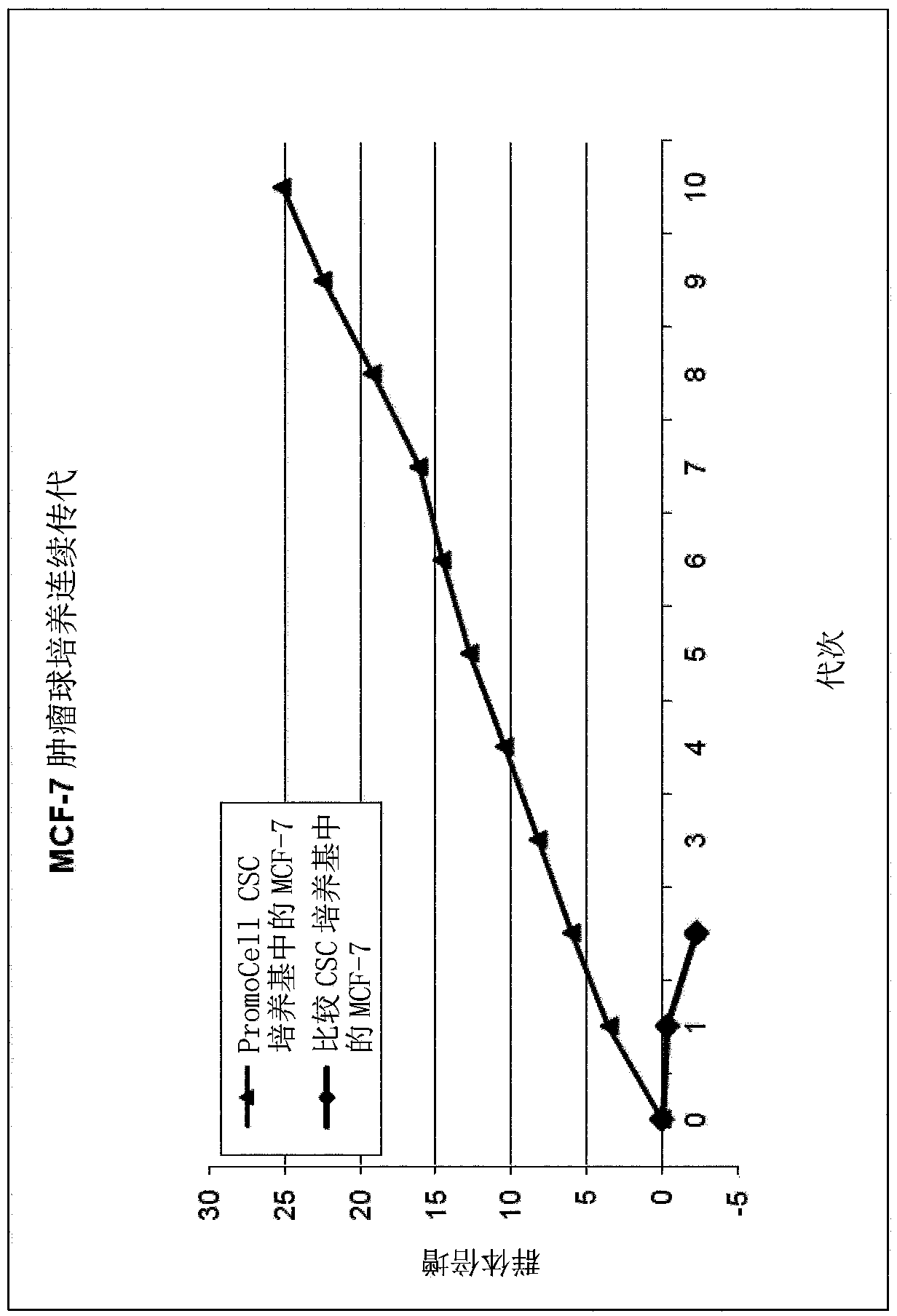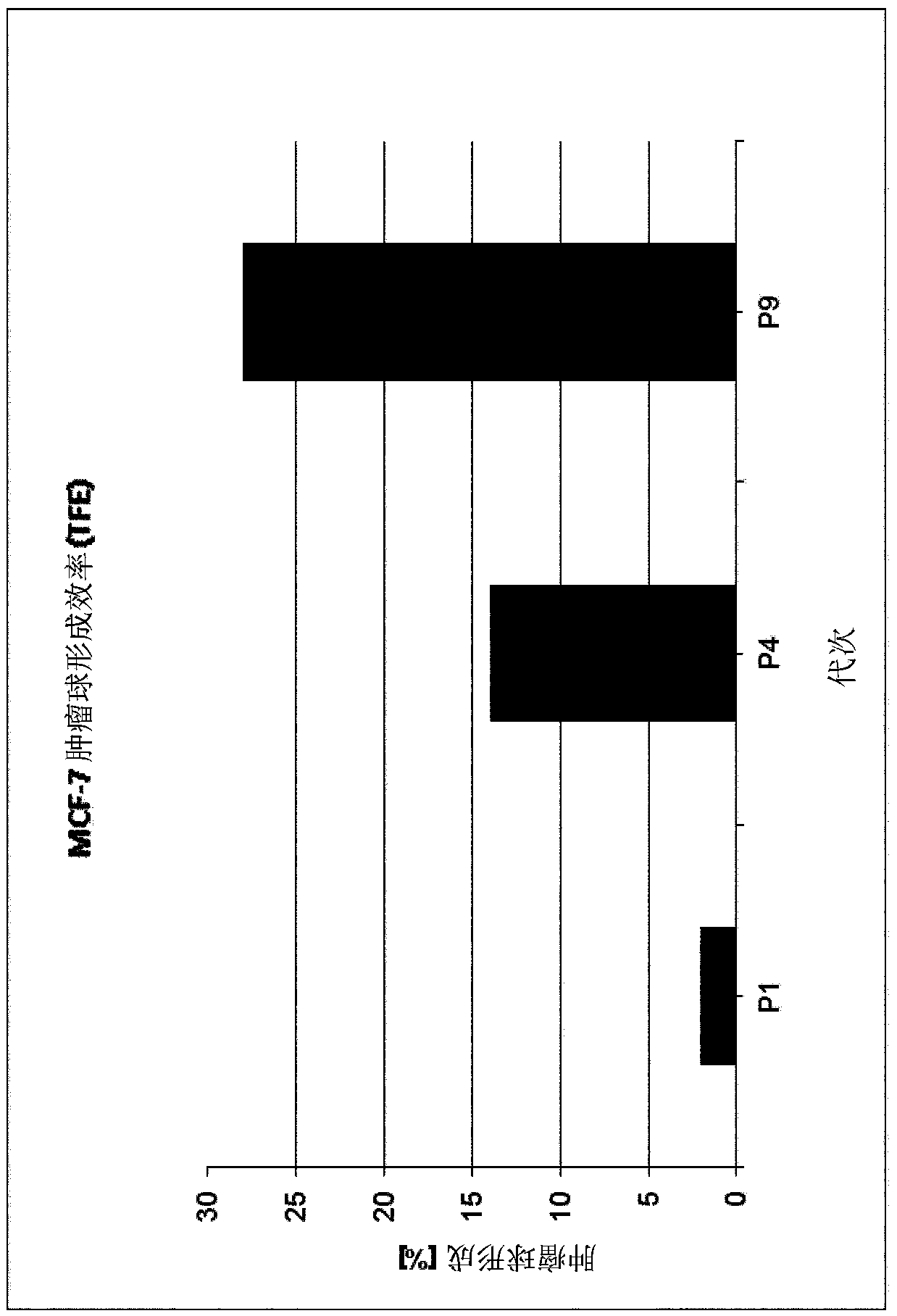Chemically defined medium for the culture of cancer stem cell (CSC) containing cell populations
A cancer stem cell, chemical composition technology, applied in the field of chemically defined medium for culturing a cell population containing cancer stem cells (CSC), can solve the problem of not being able to reliably meet the wide variability of cancer cells in a heterogeneous group
- Summary
- Abstract
- Description
- Claims
- Application Information
AI Technical Summary
Problems solved by technology
Method used
Image
Examples
Embodiment approach
[0074] As shown in the examples, excellent results for 3D tumorsphere culture were obtained with more than one fatty acid. According to one embodiment, the chemically defined medium comprises at least two fatty acids. Preferably, it comprises at least three fatty acids, more preferably at least four fatty acids. According to one embodiment, it comprises arachidonic acid, linoleic acid, linolenic acid, myristic acid, oleic acid, palmitic acid and stearic acid.
[0075]The fatty acids are preferably present in the chemically defined medium at concentrations sufficient to support proliferation and / or maintenance of cancer stem cells. The total concentration of fatty acids is preferably in the range of 1 to 100 μg / L. Suitable concentration ranges for individual fatty acids are given below. Arachidonic acid is preferably present in the chemically defined medium in the range of 0.8 μg / L to 8 μg / L, and linoleic acid is preferably present in the chemically defined medium in the ran...
Embodiment 1
[0124] Embodiment 1-Preparation according to the CSC culture medium of the present invention
[0125] First, place 90% of the final volume of cell culture grade water in a mixing vessel. Except for the sodium bicarbonate, weighed amounts of ingredients or appropriate amounts of stock solutions were then added in the order defined below under continuous stirring. Once the ingredients were in solution, sodium bicarbonate was added for a final volume adjustment, and the medium was filter sterilized. The final medium has the following composition: calcium nitrate tetrahydrate 6.18 10 1 mg / L, magnesium dichloride hexahydrate 4.18 10 1 mg / L, anhydrous magnesium sulfate 2.09 10 1 mg / L, potassium chloride 4.06 10 2 mg / L, sodium chloride 5.56 10 3 mg / L, anhydrous sodium dihydrogen phosphate 2.48 10 2 mg / L, anhydrous disodium hydrogen phosphate 2.06 10 1 mg / L, Zn 4.13 10 2 nM, Cu 1.56nM, Fe 7.31 10 2 nM, Se 1.95 10 2 nM, Mn 5.53 10 - 1 nM, Si 6.4 10 2 nM, Mo 3.48nM, V 1.08 ...
Embodiment 2
[0126] Example 2 - Transfer of breast cancer cell lines from adherent 2D culture to 3D tumorsphere culture
[0127] The transfer of the breast cancer cell line MCF-7 from adherent 2D culture in standard medium of indeterminate composition to 3D tumorsphere culture in CSC-medium (PromoCell CSC medium) according to Example 1 was performed using the following protocol test. As a reference, a comparative CSC medium for cancer cell line tumorsphere culture was tested simultaneously in the same experiment. The comparative CSC medium was Cancer Stem Premium produced by Promab Biotechnologies Inc TM . The exact composition of this medium was not disclosed.
[0128] In this protocol, the two media, CSC Medium 1 and Comparative CSC Medium, are referred to as CSC Medium.
[0129] 2.1 Harvesting adherent cells
[0130] Cells of the adherently growing cancer cell line MCF-7 containing human CSCs were detached using standard procedures (ie, trypsinization with trypsin-EDTA using the De...
PUM
 Login to View More
Login to View More Abstract
Description
Claims
Application Information
 Login to View More
Login to View More - R&D
- Intellectual Property
- Life Sciences
- Materials
- Tech Scout
- Unparalleled Data Quality
- Higher Quality Content
- 60% Fewer Hallucinations
Browse by: Latest US Patents, China's latest patents, Technical Efficacy Thesaurus, Application Domain, Technology Topic, Popular Technical Reports.
© 2025 PatSnap. All rights reserved.Legal|Privacy policy|Modern Slavery Act Transparency Statement|Sitemap|About US| Contact US: help@patsnap.com



